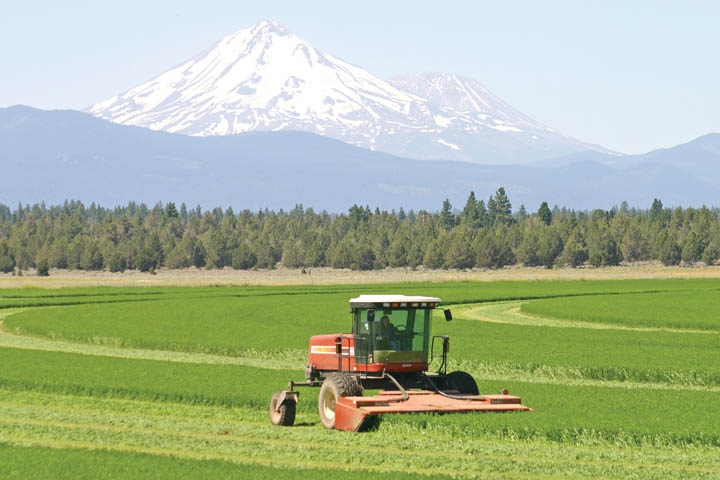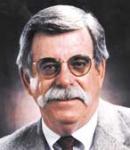
Alfalfa industry wrestles with GE contamination issues
Alfalfa is the fifth glyphosate-tolerant crop commercialized in the U.S.; however, it has become perhaps the most scrutinized and debated of all genetically engineered crops grown.Major alfalfa issues swirl around:Seed production isolation/possible cross pollination of Roundup Ready alfalfa with conventional varieties.Availability of conventional varieties in the future.The capability to guarantee GE-free alfalfa for organic dairies.The impact of RR alfalfa on export markets opposed to GE crops.
January 9, 2012

Alfalfa is the fifth glyphosate-tolerant crop commercialized in the U.S.; however, it has become perhaps the most scrutinized and debated of all genetically engineered crops grown.
Four growers and two seed company executives delineated the issues swirling around Roundup Ready alfalfa at the Western Alfalfa and Forage Conference in Las Vegas that drew 700 people.
They include:
Seed production isolation/possible cross pollination of Roundup Ready alfalfa with conventional varieties.
Availability of conventional varieties in the future.
The capability to guarantee GE-free alfalfa for organic dairies.
The impact of RR alfalfa on export markets opposed to GE crops.
Although many concerns were expressed, the general consensus of the panel was that the issues can be resolved, but will require considerable cooperation, adherence to rules to avoid contamination in critical market segments and neighborly awareness to achieve coexistence.
However, coexistence is a non-issue for Fairfield, Idaho hay grower Bill Simon, who successfully grows and markets organic, conventional and Roundup Ready alfalfa from his 4,500 acres of hay production.
Simon has been a certified organic hay producer since 1986. He farms non-organic, conventional alfalfa. He also farms two fields of RR alfalfa under center pivots, the oldest planted in 2006. Just as significant is the fact Simon tells all his customers he grows all three hay crops on his farm, and they trust him to deliver what they order.
“I believe that a reasonable coexistence program would allow an alfalfa grower to choose to plant any variety as long as he does not create an unacceptable economical problem on his neighbors’ existing operations,” Simon says.
As a certified organic producer, Simon is monitored and inspected often by the certifying organization. He has to document everything he does from soil prep to the point when trucks hauling the organic hay pull out of his farm gate carrying organic certification.
He even takes pictures of special trailer-mounted machinery used to clean equipment moving into organic hay fields from non-organic fields. This is mandatory for balers and other equipment harvesting organic alfalfa.
“A delegation of exporters from South Korea examined our records, procedures and our farm. They certified our operation as eligible to ship organic alfalfa to their country. This year we shipped organic alfalfa hay to both Japan and South Korea,” Simon said.
“Our experiences indicate that proper grower practices monitored by certifying agencies and informed customers allow organic and RR alfalfa to coexist,” he said, adding he does not envision contamination to be an issue in producing forage.
GE-free planting seed
However, he is concerned about getting GE-free planting seed.
He has been pleased to learn of more stringent isolation requirements for RR alfalfa seed production.
Rod Christensen, executive secretary, National Alfalfa and Forage Alliance, detailed to symposium attendees state and national seed production isolation procedures to maintain seed purity and avoid contamination.
Coexistence is not a new phenomenon in agriculture, said Christensen. The 70-year-old seed certification program allows for the coexistence of seed production of different varieties in the same area based on crop biology, production system and isolation that ensure seed genetic purity.
The alfalfa seed and forage alfalfa industries, under the leadership of the alliance, have developed more draconian strategies and tools specific to the GE industry that complement existing programs and procedures.
These include new Grower Opportunity Zones (GOZ) where only GE alfalfa seed or conventional variety seed could be produced.
There are currently 12 organized GOZs with two more under consideration.
One area where RR alfalfa seed cannot be produced is California’s Imperial Valley where there is an alfalfa field on just about every corner.
Brawley, Calif., seed and hay producer Scott Emanuelli told the audience that 225,000 acres of the 450,000 of farmland in the Southern California desert valley are planted to alfalfa. Imperial Valley has declared itself “A Roundup Ready free growing region” to protect not only existing conventional and organic seed production, but also the valley’s lucrative hay export market. Many overseas buyers will not accept GE crops.
“As it stands today, co-existence is not possible in the Imperial Valley” for a variety of reasons, Emanuelli said. Approximately 50 percent of it is custom harvested, and machines travel between fields without clean downs and possibly without knowledge of whether the stand would be GE or conventional. Imperial County also has a very large honey bee business and bees are scattered around the entire valley, increasing the potential for cross pollination. In addition to all that, a large percentage of the alfalfa acreage can go to seed and all of the hay will definitely bloom during extreme summer heat.
Zero tolerance
“As long as we have customers that demand zero tolerance of GE contamination, we as an industry must ensure we can produce their demands, because if we can’t someone else will,” he said.
“A coexistence strategy for alfalfa hay and seed growers and the industry as a whole may be the single most important issue we are facing right now.”
Zero contamination of alfalfa hay and seed “must be possible or we are going down a very scary road.” The Imperial Valley economy “would take a major hit as we currently ship approximately 30 to 40 percent of our hay and an even greater percentage of our alfalfa seed to GE sensitive markets.”
Pasco, Wash., hay grower Chep Gaunt is not sure zero tolerance is possible.
“I don't know if it is possible to have zero GE alfalfa,” he said. Specific seed production zones are critical to reduce contamination. However, he believes GE sensitive hay should be subject to a threshold number, like 3 percent.
“This number should be a USDA standard for the United States. With an exact published standard, all producers would be cognizant of what they can expect and what their customers can expect.”
Gaunt does not grow RR alfalfa, but does produce GE sweet corn. He is a major hay exporter and his customers demand GE-free hay in their contract.
Washington state exports 25 percent to 30 percent of its hay production and losing that market to GE contamination would be devastating to farmers in the state, he said.
“An effort must be made beginning with seed companies (genetic suppliers), seed salesmen and individual farms to be completely open and honest about crops and cropping plans. If an individual has a question about a neighbors’ cropping plan, then open communication should exist,” he said.
About the Author(s)
You May Also Like





